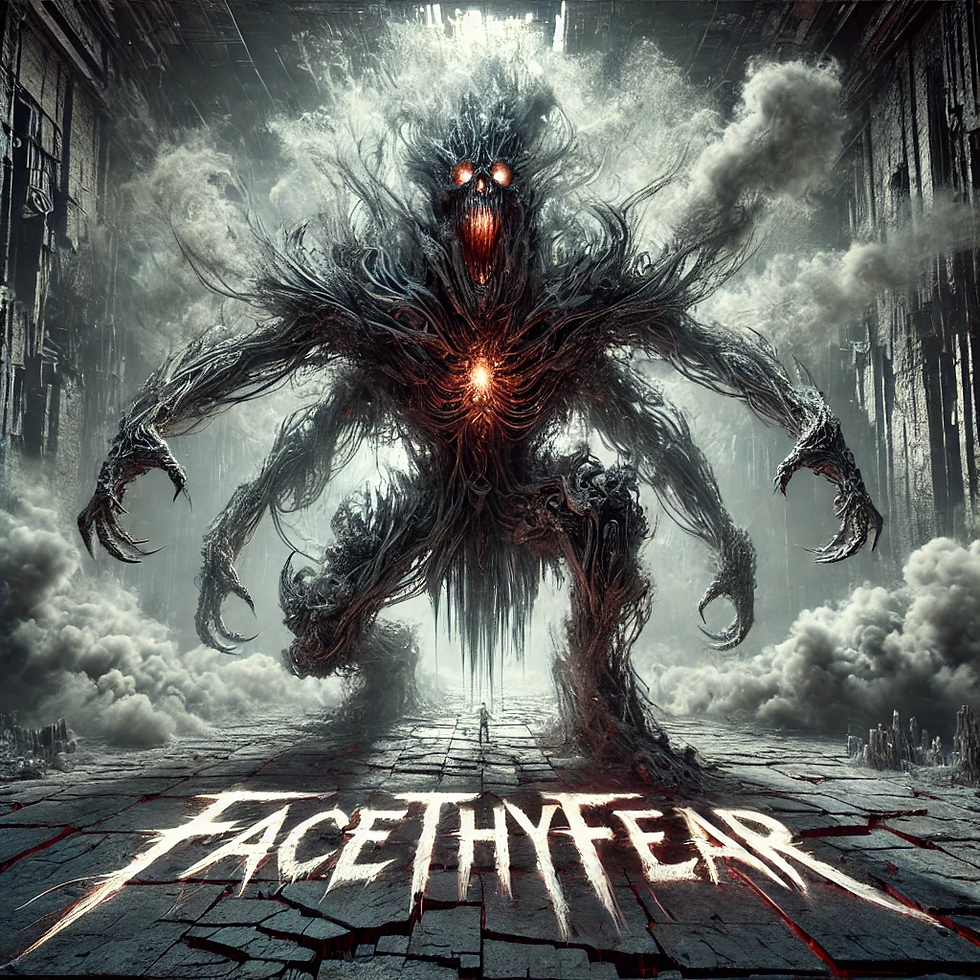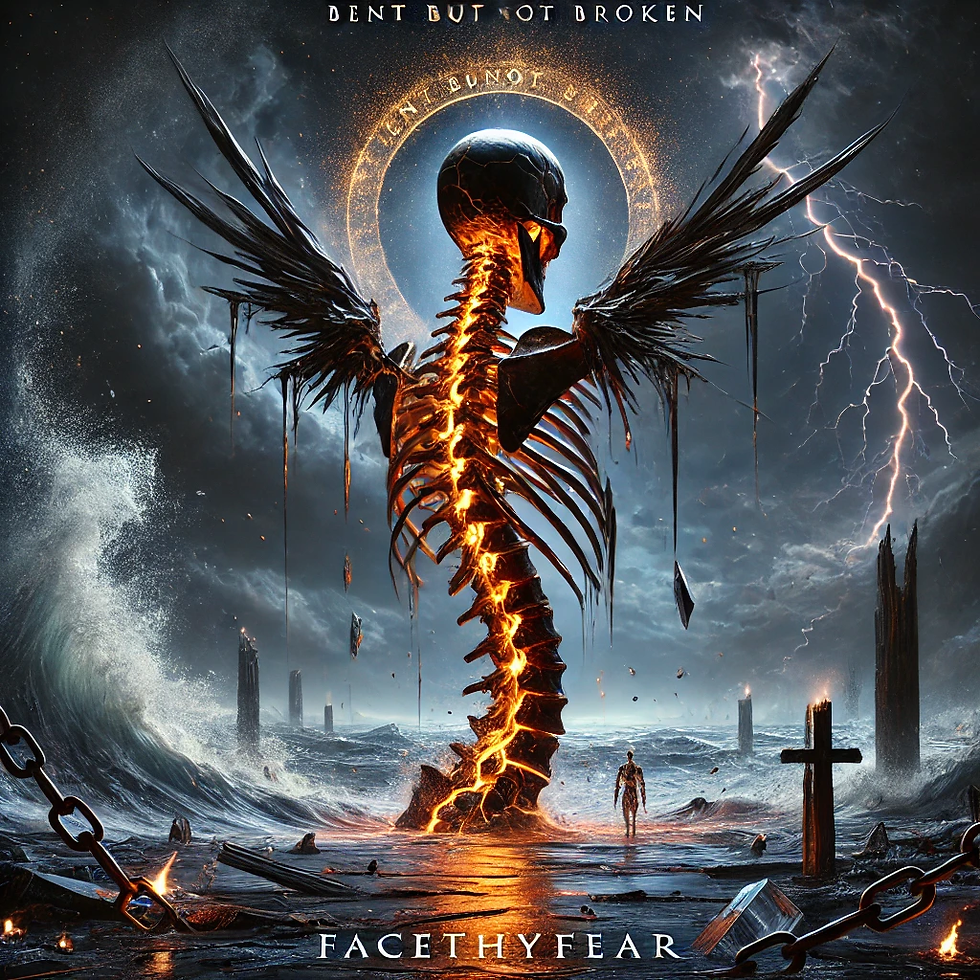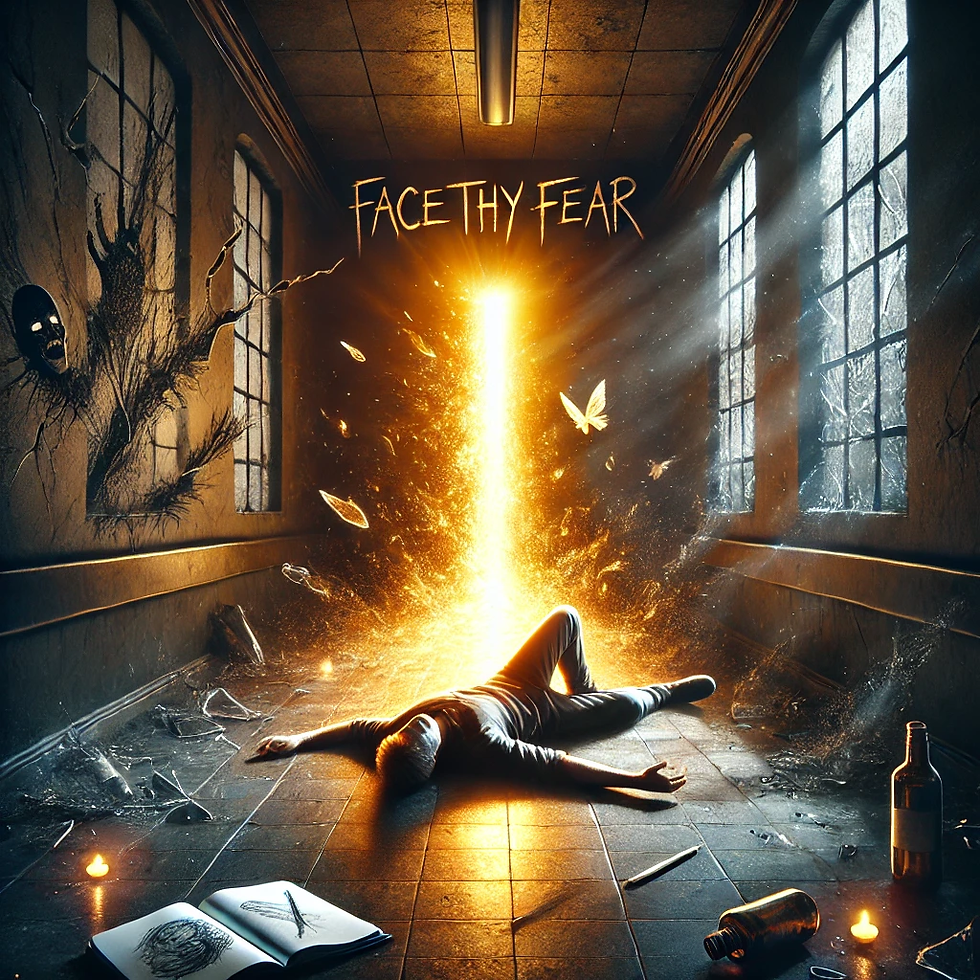Isolation is a Beast
- facethyfear

- Mar 22
- 5 min read

By Malcolm Pannell | FaceThyFear
Isolation is a beast. It sneaks up, wraps itself around you, and before you know it, you’re locked in a cycle that feels impossible to break. I know this because I lived it. And I beat it. This isn’t just a story—it’s a blueprint for anyone out there still stuck in the dark.
Isolation doesn’t just affect the mind—it rewires the brain, distorts reality, and convinces you that suffering in silence is your only option.
Studies show that chronic isolation can lead to increased activity in the amygdala, the part of the brain responsible for fear and stress responses, while also reducing gray matter in areas linked to decision-making and social interaction. This means that prolonged isolation doesn’t just feel terrible—it physically changes the way your brain processes the world, making it even harder to break free. But that’s a lie.

The Depths of Isolation
I used to isolate a lot, especially in addiction. I’d drink and snort for days at a time, keeping the windows closed and the room dark. I barely bathed. Didn’t shave. The evidence of my addiction was everywhere—empty bottles, powder-covered surfaces, and a room that smelled like regret.
I felt hopeless. It didn’t matter if I was alone in my room or sitting on a crowded bus; I felt disconnected from the world, like I didn’t belong anywhere. I felt useless. I remember staring at my phone, knowing I needed help but not having where to start. I had convinced myself that no one cared, and maybe I was better off fading into nothingness.
That kind of isolation isn’t just being alone—it’s a slow death of the mind. My brain rewired itself to accept the darkness, just like addiction rewires the brain to crave a substance it knows is killing you.
Studies show that prolonged isolation can shrink the hippocampus—the part of the brain responsible for learning and memory—while overstimulating the amygdala, making stress and anxiety worse. It’s a vicious cycle, one that convinces you that staying alone is the safest option, even when it’s destroying you.

The Body Keeps Score
Looking back, I realize that’s probably why my back is the way it is now. The body keeps score.
During the worst of my addiction and isolation, I would sit or lie in the same position for hours, even days. No stretching. No walking. Just stillness and self-destruction. It caught up to me.
Now I live with early degenerative disc disease and segmental and somatic dysfunction of my cervical, thoracic, and lumbar spine. That means my spine is literally breaking down. My posture, the way I neglected my physical health, and the tension from stress and emotional trauma—it all left a mark.
My back pain isn’t just physical. It’s the echo of every day I spent in isolation, every moment I ignored what my body was trying to say. The same way addiction robbed my mind, isolation stole my body—and now I fight to reclaim it.

The Breaking Point
I finally let go when I had no choice. My body shut down. My mind broke. I had to die mentally in the hospital and again in rehab in Savannah before I found myself.
That’s where FaceThyFear was born. In those moments, sitting in group therapy, drawing, trying to put the pieces together, I started seeing that life could be different.
I started walking more, getting outside, forcing myself to breathe fresh air and reconnect with the world. Each step, each stroke of a pen, each small action pulled me further from the grave I had dug for myself.
It wasn’t an instant transformation. Some days I still struggled. Some nights I still felt like I was drowning in my own thoughts. My body was exhausted, my mind racing, replaying every mistake I’d ever made. The walls felt like they were closing in, and I questioned if I’d ever be able to crawl out of that pit. But something in me refused to let go.

Rebuilding & Fighting Isolation Every Day
Isolation doesn’t just vanish overnight. It still tries to creep in. Some days, I feel that urge to shut everything out—to close the blinds, stay in bed, and retreat. But I know where that road leads, and I refuse to go back.
Now, I fight it.

Ways to Overcome Isolation
1. Engage in Movement
Whether it’s walking, stretching, hitting the gym, or stepping outside—movement wakes the body and clears the mind. When I first came out of isolation, I started with short walks. Just stepping outside felt foreign, but each step reminded me I was still part of the world.
2. Social Micro-Actions
A simple “what’s up” to a neighbor or a quick conversation with a cashier helps. I used to avoid people, but small social acts rebuilt my comfort with connection.
3. Join a Community
Recovery groups, book clubs, fitness crews—anything that aligns with your spirit. FaceThyFear and my recovery group became my family. Find your tribe.
4. Volunteer Your Time
Serving others brings purpose. Helping others gave me a reason to show up on days when I wanted to disappear.
5. Limit Social Media & Doomscrolling
That feed will trap you in comparison and numbness. I had to put my phone down and start living again.
6. Creative Outlets
Art, writing, music—whatever helps you express what words can’t. Drawing saved me in rehab.
7. Therapy & Professional Help
You don’t have to process pain alone. Therapy helped me unpack years of silence.
8. Adopt a Pet
If you can, get a pet. My rescue cat gave me structure, warmth, and a reason to show up for something besides myself.
And I Maintain and Build. Simple as That.
Final Thoughts: The Future of FaceThyFear
• More FaceThyFear merchandise: including .925 silver charms and new T-shirts
• Music: I’m already writing. Now it’s time to record
• Expanding the brand: This isn’t just recovery—it’s resilience, expression, and legacy
• Finishing school, mastering my HVAC craft
• Therapy: Time to unpack more trauma and keep evolving
• Building my body back. I refuse to fall apart
• Strengthening family ties. Maybe moving in a few years—who knows?
All I know is this: I’m here. I’m alive. And I’m never going back.
If you’re reading this and you feel trapped in isolation, I get it. I’ve been there. But you don’t have to stay there.
One small action—just one—is enough to start climbing out.
For me, that first step was opening a window. Letting in fresh air felt like rebellion. Then came walking, talking again, creating FaceThyFear. Each act built on the last.
You’re not trapped unless you let yourself be.
Open the window.
Take a walk.
Say “what’s up.”
You’re not meant to live in that darkness forever.
You deserve to breathe. You deserve to move. You deserve to live again.
FaceThyFear
Website: www.Facethyfear.com | www.ftfnow.net
Email: facethyfear@gmail.com
Instagram: @FaceThyFear
Copyright © 2025 FaceThyFear. All rights reserved.
FaceThyFear® is a registered brand focused on resilience, recovery, and rebirth through art, storytelling, and action.
FaceThyFear: From Darkness to Light
If you or someone you know is struggling with addiction, depression, or isolation—reach out. Help is available.
You are not alone.
Take it 24 hours at a time. Face your fear. Keep going.





Comments